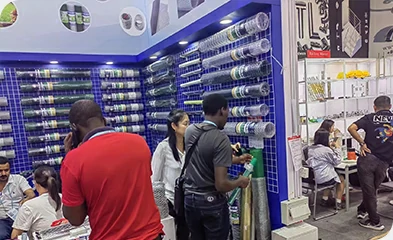 TEL:
+86-13102802206
TEL:
+86-13102802206
 Email:
fencenetting@china.com
Email:
fencenetting@china.com
 Language
Language
 TEL:
+86-13102802206
TEL:
+86-13102802206
 Email:
fencenetting@china.com
Email:
fencenetting@china.com
 Language
Language


Temp Fencing A Versatile Solution for Security and Safety
Temporary fencing has emerged as a vital tool across various industries and events. Whether it is establishing security at construction sites, managing crowds at festivals, or ensuring safety at sporting events, temp fencing provides a flexible and efficient solution. This article delves into the significance, benefits, and applications of temporary fencing, highlighting why it has become an integral part of modern security measures.
Understanding Temporary Fencing
Temporary fencing is a type of modular barricade that can be set up and dismantled easily. Typically made from durable materials like steel or plastic, it comes in various forms, including chain-link, mesh, and panel fences. The primary purpose of temp fencing is to create a secure perimeter, preventing unauthorized access and ensuring the safety of individuals and property.
Benefits of Temporary Fencing
1. Quick Installation and Removal One of the most significant advantages of temporary fencing is its ease of installation and removal. This makes it ideal for events that have a short duration or require rapid setup, such as concerts, exhibitions, and sports competitions.
2. Cost-Effective Compared to permanent fencing solutions, temporary fencing is often more affordable. Rental options further reduce costs, making it accessible for businesses and event organizers on a budget.
3. Versatility Temp fencing can be customized to fit various needs. It can be configured to create enclosures of different sizes and shapes, providing flexibility for unique site requirements. Additionally, barriers can be augmented with features like gates, privacy screening, or branding options.
4. Enhanced Security By creating a physical barrier, temporary fencing deters unauthorized access to sensitive areas. This is especially crucial for construction sites, where the risk of accidents and theft is high. Properly installed temp fencing acts as a deterrent, reducing the likelihood of incidents.

5. Public Safety In crowded environments, temporary fencing helps manage foot traffic, preventing overcrowding and ensuring a safe experience for attendees. During events, it can guide the flow of people, help in emergency evacuations, and keep restricted areas secure.
Applications of Temporary Fencing
1. Construction Sites One of the most common uses of temporary fencing is at construction sites. These sites pose various hazards, and temp fencing helps keep trespassers out while safeguarding workers and equipment.
2. Events and Festivals Organizers of concerts, fairs, and festivals use temp fencing to define boundaries, manage access points, and create secure areas for vendors, performers, and attendees.
3. Sporting Events Temporary fencing is utilized in sporting events to create secure zones for players and officials, control crowd access, and ensure spectators are kept at a safe distance from the action.
4. Emergency Situations In the aftermath of disasters, temp fencing can be rapidly deployed to secure hazardous areas, stabilize structures, and provide a buffer for responders.
5. Residential Use Homeowners may use temporary fencing for various reasons, from securing a yard during a party to containing pets or children. It offers an effective solution for short-term needs without the commitment of permanent installations.
Conclusion
Temporary fencing plays a crucial role in enhancing security and safety across a diverse range of settings. Its quick installation, cost-effectiveness, and adaptability have made it popular among businesses, event organizers, and individuals alike. As the demand for flexible security solutions continues to grow, temporary fencing stands out as a practical choice that meets various needs while ensuring the safety of people and property. Whether for a construction site, an outdoor concert, or a local fair, temp fencing remains an indispensable asset in modern event management and site security.